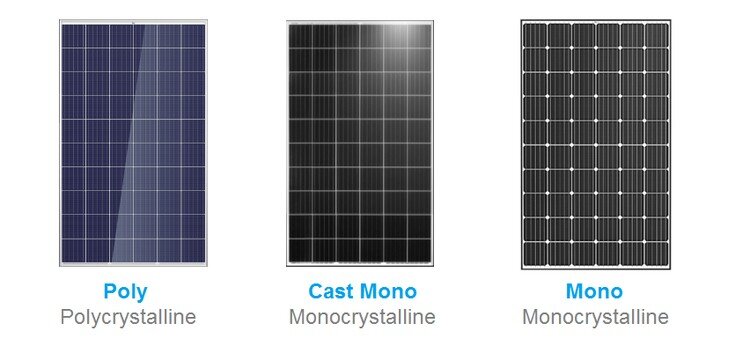Solar Systems Things To Know Before You Get This
Some Known Questions About Solar Systems.
Table of ContentsThe Facts About Solar Systems Uncovered5 Easy Facts About Solar Systems ExplainedMore About Solar Systems9 Simple Techniques For Solar Systems
There are 3 various kinds of solar panels: monocrystalline, polycrystalline, and thin film. Monocrystalline solar panels are highly effective and also have a sleek style, however come with a higher price factor than other solar panels. Polycrystalline solar panels are more affordable than monocrystalline panels, nonetheless, they are much less effective as well as aren't as visually pleasing.Nowadays, there are a number of ranges of monocrystalline solar panels on the market to pick from. Passivated Emitter and Rear Call cells, even more frequently described as PERC cells, are ending up being a progressively prominent monocrystalline option. PERC cells undergo a different production as well as assembly process that increases the quantity of electrical energy the cells can create.
Since monocrystalline solar cells are made of a solitary crystal of silicon, electrons are able to conveniently stream throughout the cell, enhancing overall performance. Not only do monocrystalline panels have the highest possible effectiveness ratings, they normally also have the highest possible power capability rankings. Many monocrystalline panels on the marketplace today will have a power result score of a minimum of 320 watts, however can rise to around 375 watts or higher!.
Due to the fact that polycrystalline cells include numerous silicon cells, the electrons can not move as quickly and also because of this, lower the efficiency of the panel. The reduced efficiency of polycrystalline panels additionally indicates they tend to have a reduced power result than monocrystalline panels, typically varying between 240 watts as well as 300 watts.
Facts About Solar Systems Uncovered
4% effectiveness with slim movie cell models but. In order to satisfy your energy requires, you would certainly require to mount even more slim movie panels over a huge location to generate the very same quantity of electricity as crystalline silicon solar panels. This is why thin film solar panels don't really make sense for domestic installations where space is limited.
The temperature coefficient informs you just how much the power outcome will decrease by for every 1 * C over 25 * C the panel obtains. The typical temperature level coefficient for mono and polycrystalline panels commonly drops someplace between -0. 3% and -0. 5% per * C. Thin movie panels on the various other hand, are around -0.
In truth, with some thin movie panels, it's difficult to even see the specific cells within the panel. They likewise tend to have much less electrical wiring and busbars, suggesting there's less white space. Because they are so ineffective, you would require to cover your whole roofing in slim film panels - which might or may not be your design.

Some manufacturers have worked around this with black packing or forming the cells in different ways, yet these aesthetic changes can impact both the rate as well as performance of the panels. Overall, monocrystalline panels still look sleek, yet they're a bit much more noticable than thin movie panels. solar systems. The process in which polycrystalline solar cells are made triggers the cells to have a blue, marbled look.
See This Report on Solar Systems
If you're on a limited budget, polycrystalline panels may make even more sense for you. We do not advise thin movie photovoltaic panels for domestic installments - their performance and also resilience do not make the low expense worth it, and it's unlikely you'll have virtually enough area to mount the number of thin movie panels you would need to cover your house electricity use.
Because they are made from pure silicon, they can be easily recognized by their dark black shade. Making use of pure silicon likewise makes monocrystalline panels one of the most space-efficient and longest-lasting among all three solar panel kinds. However, this comes at an expense a great deal of silicon is wasted to create one monocrystalline cell, occasionally getting to over 50%.

Amorphous silicon panels (A-Si) obtain their name from their unformed nature. Unlike mono-and polycrystalline solar cells, the silicon is not structured on the molecular level. Generally, an a-Si cell needs just a portion of the silicon needed to produce regular silicon cells. This enables them to have the least expensive production expense, at the expenditure of effectiveness.
Everything about Solar Systems
$0. 32-$0. 65 $1 $1. 50 $0. 70 $1 $0. check this site out 60 $0. 70 $0. 50 $0. 60 $0. 43 $0. 50 Note that these numbers do not consist of the expense of setup and labor. With labor and other overhanging variables, the total amount can climb to $2. 50 to $3. 50 per watt.

This suggests that thin-film panels can be a good option for hotter atmospheres or locations that experience even more click here now sunshine throughout the year. The upgraded International Structure Code of 2012 requires photovoltaic panels to match the fire ranking of the roofing system where they are installed. This is to make certain that the modules do not speed up the spread of fires in the occasion of a fire.